Where to See Wildlife
There are many places to see wildlife across Pennsylvania, from elk in the north to bats in the south. Navigate with the map or view the chart below.
The best way to see wildlife is to sit quietly and remain still. For the best results, use binoculars and keep a safe distance between yourself and wildlife.
Please do not attempt to handle any wild animal. If an animal does not run away from approaching people, it might be sick or injured. If you observe any unusual behavior by wildlife, please contact a park employee immediately.
Select a region on the map or zoom in on the map using the zoom tool on the left. Selecting a park in the map will reveal an information box with a listing of amenities in the park, and a link to the park in the listing far below.
Northern Pennsylvania Wildlife
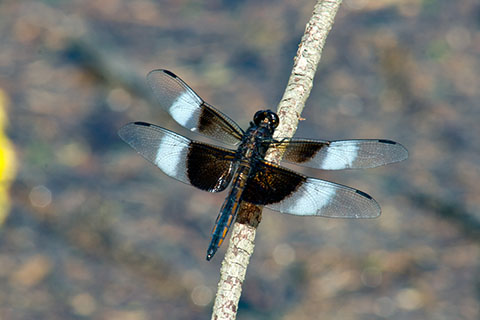
The huge lake is a haven for wildlife, including nesting Bald Eagles. Old field habitat provides homes for bluebird, monarch butterfly, woodchuck, and cottontail rabbit, while squirrel and downy woodpecker inhabit the woodlots. A mature oak and hickory forest covers the Bald Eagle Mountain and provides homes for porcupine and turkey.
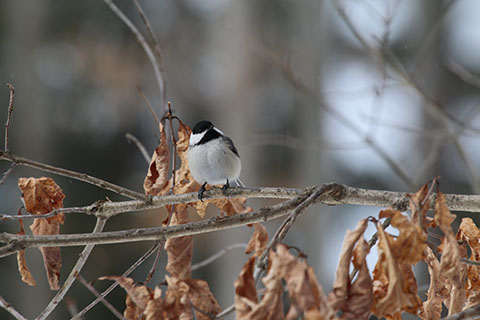
The forests of the park are home to deep forest birds and even some that are south of the usual ranges due to the park's cool climate. The Black Moshannon Bog Natural Area is the largest reconstituted bog in the state and features unique plants and wildlife.
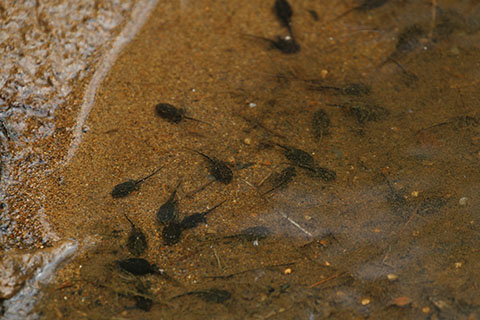
Many animals live in river valleys or follow them during migrations. Osprey, bald eagle, kingfisher, many duck species, merganser and other birds, otter, deer, mink, and other animals are noteworthy river valley inhabitants and can be seen in Bucktail State Park.
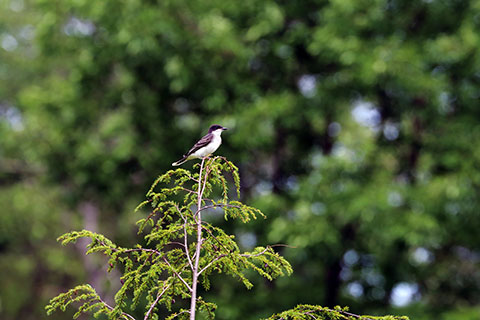
The lake and wetlands are rest stops for migrating waterfowl. The surrounding forests are home to deep forest wildlife.
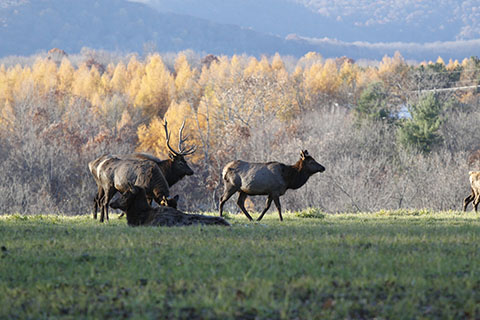
The Elk Country Visitor Center is the premier elk viewing location in Pennsylvania and is home to the largest elk herd in the northeastern U.S. Through outstanding exhibits, the visitor center has information about elk history, behavior, and conservation.
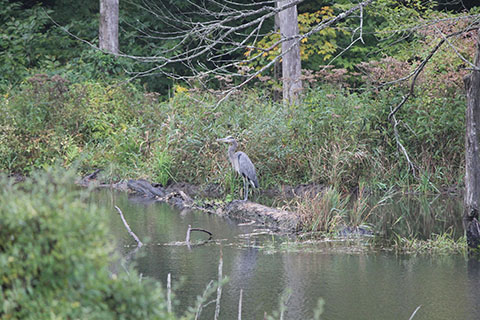
Wildlife abounds in and around Hills Creek State Park. Along with an active beaver colony, there are other water-loving creatures including muskrat, wood duck, great blue heron, and osprey. Bald eagles are frequent visitors to the park.
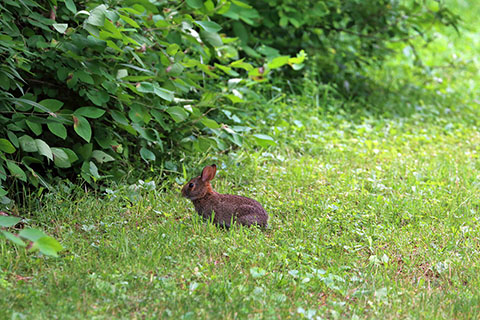
The Grand Canyon of Pennsylvania is a National Natural Landmark and a State Park Natural Area. The large abundance of deciduous hardwood trees display beautiful autumn shades of yellow, orange, red and purple. Raptors are often seen riding updrafts in the canyon.
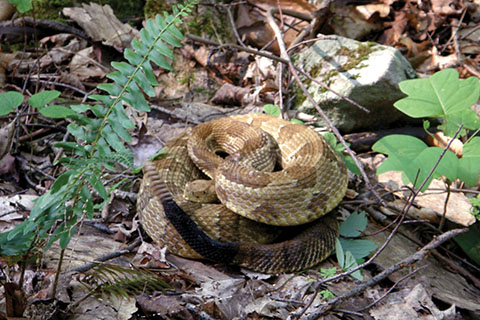
In the spring, bald eagle, osprey, and many kinds of waterfowl visit the lake and streams. In the summer, herons and otters may be seen on the lake. The fall season brings many migratory birds, like loons, snow geese, and many raptors.
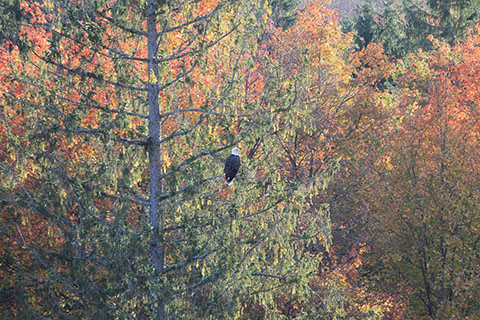
Depending on the season, visitors can see woodland wildlife like bobcat, coyote, white-tailed deer, black bear, and wild turkey. In the spring, Lyman Lake is visited by migrating waterfowl like common loon, wood duck, and common merganser.
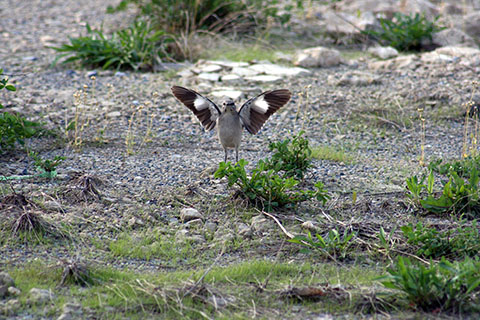
The rich soil of the floodplain supports a diversity of vegetation. The southern part of the island is undeveloped and covered in a forest of predominantly silver maple, river birch, and sycamore. The island is a rest area for migrating songbirds and waterfowl.
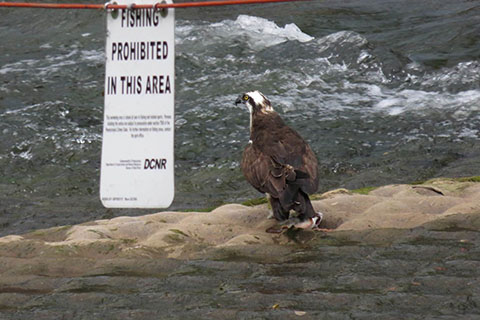
Surrounded by the deep forests of Susquehannock State Forest, Kettle Creek flows through Ole Bull State Park providing habitat to many species of wildlife. Many wetlands, some created by beavers, are home to specialized animals and plants.
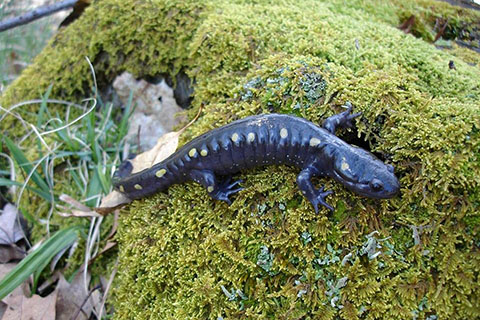
Parker Dam State Park and the surrounding Moshannon State Forest harbor deep forests where wildlife thrives in unbroken wilderness. Look for black-throated green and blackburnian warblers and ravens in conifer forests.
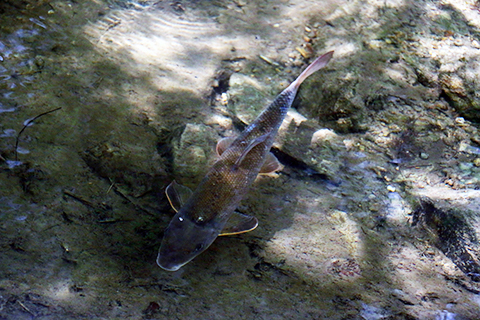
Big Poe and Little Poe mountains cradle Big Poe Creek. Deep forests and the creek valley host many species of wildlife. The lake is a rest stop for migrating waterfowl.
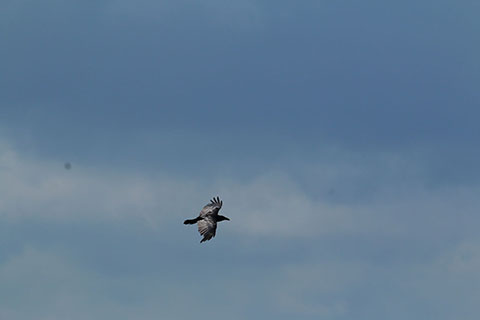
The park was named for the ravens that once roosted on the rocks ledges at the southern end of the park. Ravens are still seen around the park and can be distinguished from crows since ravens are bigger and make a deeper, groan-like call.
The 39 acres surrounding the Rapid Run Nature Trail is one of the first State Park Natural Areas, an area set aside to provide locations for scientific observation of natural systems. In the Natural Area, you can find black and white pileated woodpeckers and barred owls. In the vernal pools, you will find fairy shrimp, caddisfly cases, spotted salamander, and wood frog eggs. The butterfly and bird gardens located near the park office attract butterflies, hummingbirds, and sparrows.
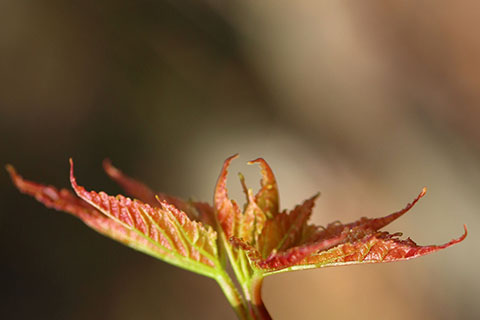
The dominant habitat in and around the park is forest of towering white pines, hemlocks, and oaks. Maple, ash, tulip poplar, gum, hickory, and dogwood trees, and mountain laurel and rhododendron add to the year-round scenic beauty. Honey Creek is riparian habitat for wildlife.
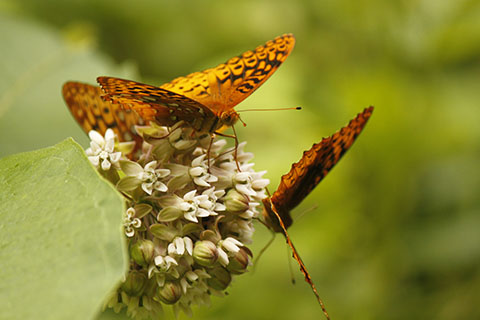
Shikellamy State Park is a wonderful place to watch wildlife, especially migrating birds and butterflies. The confluence of the branches of the Susquehanna is a rest stop for migrating waterfowl and wading birds.
Sinnemahoning offers the visitor a variety of wildlife watching experiences. Depending upon the season, one could encounter nesting bald eagles, see elk nursing their calves in a small nursery group, hear a coyote howling as it advertises its territory, or maybe catch a glimpse of a bobcat slinking through the thick spruce as it stalks its evening meal.
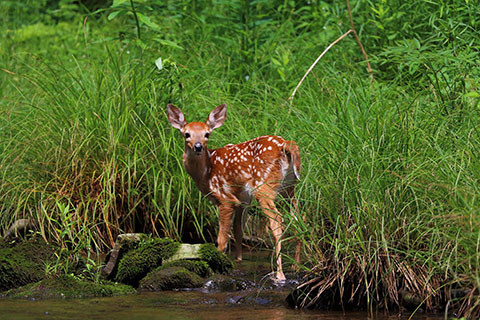
In the spring and summer, small woodland flowers, flowering trees, and mountain laurel blossom in profusion. During the fall, the flaming foliage of the mixed hardwood forest provides a colorful backdrop for visitors to enjoy the park. The topography of the entire park is a severely dissected plateau with narrow stream valleys.
Southern Pennsylvania Wildlife
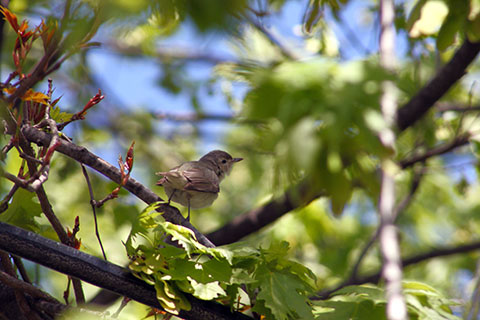
Mountainous Blue Knob State Park is a great place to see wildlife in all seasons. In spring, hepatica and spring beauty bloom. Warblers and vireos arrive from the south. Summer is a time for wildlife babies, like deer, and many birds. In winter, Blue Knob is a winter wonderland.
The conservation area’s many trails offer good opportunities for seeing white-tailed deer, wild turkeys, squirrels, grouse, black bears, and a variety of songbirds, depending on the season. Eastern bluebird boxes are around the main parking lot. Please enjoy viewing the bluebirds but do not disturb the boxes. The field hosts thousands of butterflies in the summer.
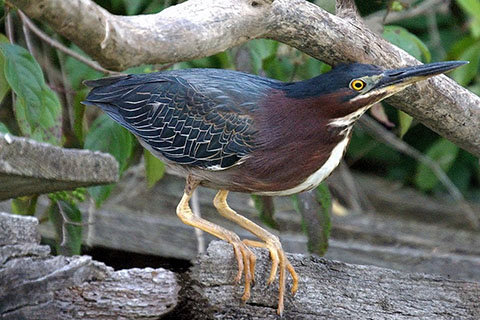
Old fields, wetlands, a lake, and a limestone deep mine are interspersed with deciduous woodlots, which provide excellent habitat for over 200 species of birds and mammals at Canoe Creek. The park hosts a little brown bat nursery and hibernaculumn.
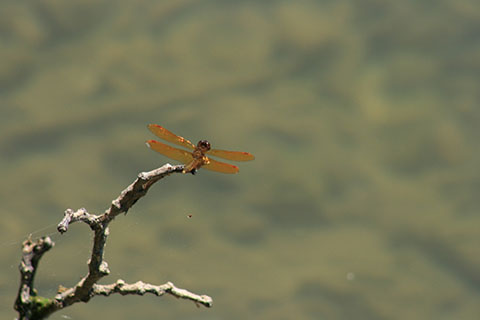
Codorus State Park has many different habitats, like forests, fields, wetlands, and a large lake, which make it a great place to see wildlife. The lake is a magnate for migrating waterfowl like ruddy ducks, and scaups and shorebirds like dunlins and sandpipers.
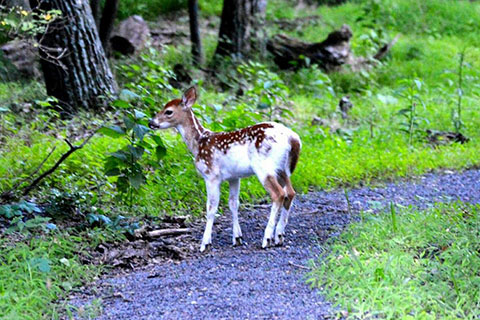
Cowans Gap State Park is in Allens Valley, a narrow, highland valley between Tuscarora and Cove mountains. In spring, wildflowers bloom, warblers stop and rest in the forests and waterfowl explore the lake. In summer, veery and wood thrush call.
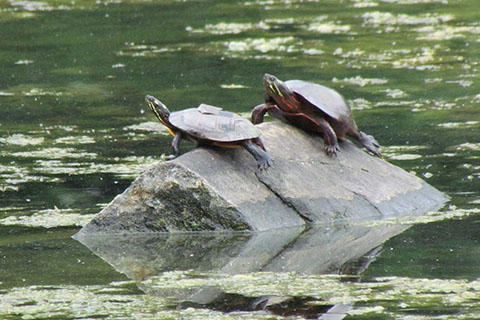
The diverse habitats of Gifford Pinchot State Park support a variety of wildlife through all seasons. Spring brings wildflowers which bloom before the trees get leaves and migrating waterfowl to the lake and warblers to the forest. Butterflies peak in summer, including the giant swallowtail.
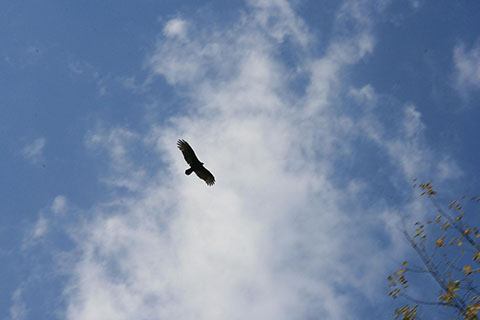
Wildlife is abundant in the area. The alert observer may see white-tailed deer, black bear, wild turkey, ruffed grouse, and many species of small animals. Duck, great blue heron, and occasionally osprey visit the lake. At dusk in late May and June, whip-poor-will sing their unique call.
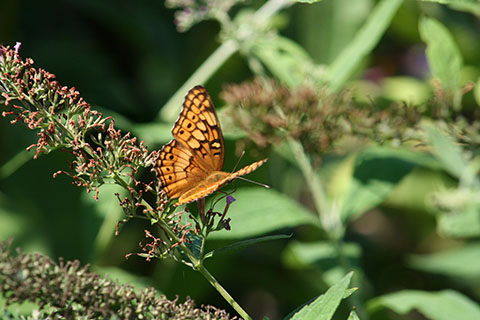
The conservation area is in the Ridge and Valley Province of the Appalachian Mountains, which is characterized by long parallel mountain ridges and wide, flat valleys. The various trees produce nuts, seeds, and berries. While here, you can browse for wildlife including white-tailed deer, squirrels, ruffed grouse, wild turkey, black bear, and many species of birds.
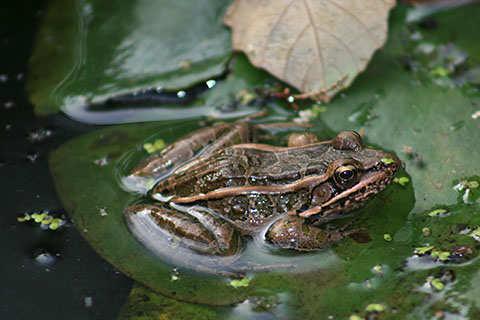
The habitats of Kings Gap span from the mountaintop to valley floor. Birds of the mountaintop are pleated woodpeckers, wood pee-wees, and kinglets. Birds of the valley are scarlet tanagers, ovenbirds, and wood thrushes. Five-lined skinks are common on the mountaintop.
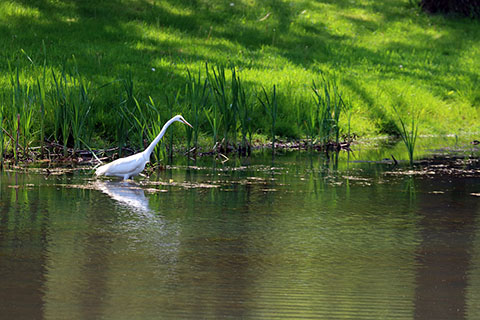
Holman Lake provides habitat for many animals, including green herons, egrets, and beavers. Many species of warblers inhabit the forests of the park. Common yellowthroat, yellow warbler, and the blue-gray gnatcatcher are common.
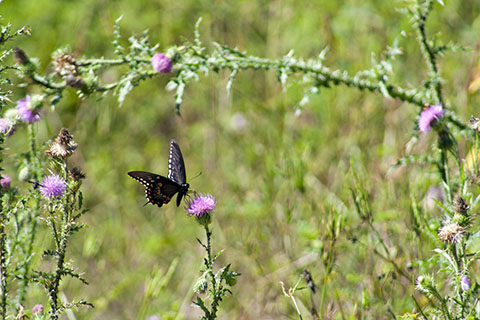
The alert observer may see white-tailed deer, black bear, wild turkey, and many species of small game. The small, 3.5-acre lake at the confluence of Sassafras Run and Standing Stone Creek has wily native brook trout. On quiet evenings, muskrats can be seen on the lake and an occasional duck, goose, or eagle visits from time to time.
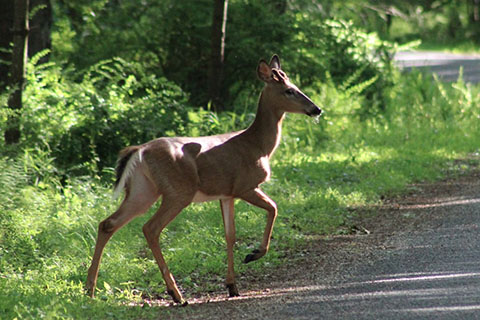
The diverse habitats of Pine Grove Furnace State Park support a variety of wildlife through all seasons. The historic use of the area during the iron furnace period created a varied combination of open areas, wetlands, and vegetation that make the area unique to wildlife.
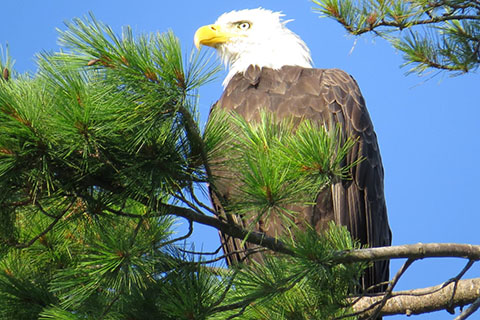
The diverse habitats of Prince Gallitzin State Park provide great opportunities for viewing wildlife. The 1,635-acre Glendale Lake, with its 26 miles of shoreline, is home to many species of fish, birds, other and animals. Wyerough Branch and the upper reaches of Slatelick and Mudlick branches are covered in wetland plants and are good places to see ducks, herons, and rails.
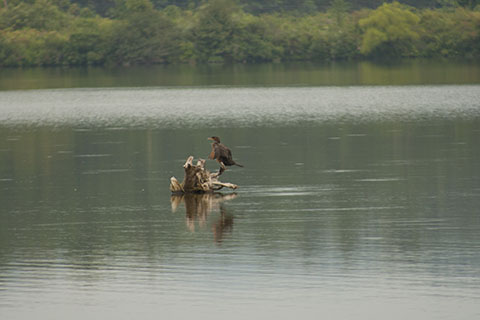
The lake and wetlands are home to many animals and plants. Waterfowl use the lake as a rest and refueling stop during migration. The forests harbor many deep forest birds like warblers.
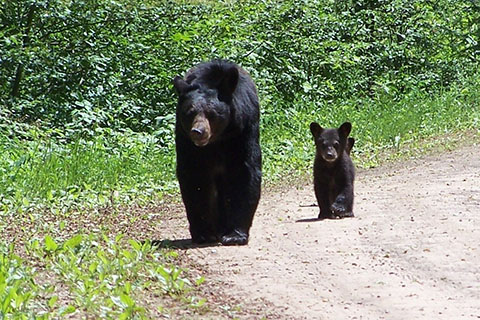
Bald eagles, osprey and the more common turkey and black vultures regularly patrol the sky by the Hawk Point Overlook. Spring and fall are peak seasons for bird migrations and the park can provide great views of migrating hawks, gulls, eagles, ducks, geese, swans, songbirds, and shorebirds.
Trough Creek is a great place to see woodland birds, like scarlet tanager, veery, chickadee, and pileated woodpeckers. Copperhead, timber rattlesnake, and five-lined skink can often be found on rock outcrops throughout the park. Black bear, white-tailed deer, and turkey are often seen along Little Valley Road. Osprey and bald eagles often fish Great Trough Creek.
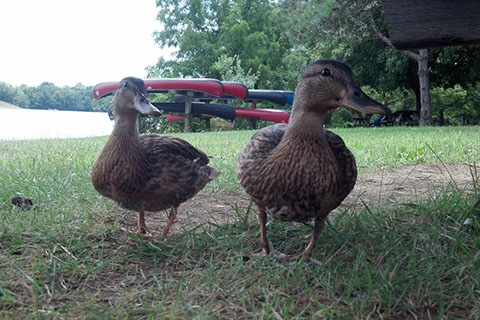
Several unique habitats exist as a result of the river carving it’s way through the land. A fresh water swamp follows the long axis of the park adjacent to the river bottomland. Also, across the river from the swamp is an excellent example of weathered shale cliffs with unique trees, plants, and animals associated with this environment.
Eastern Pennsylvania Wildlife
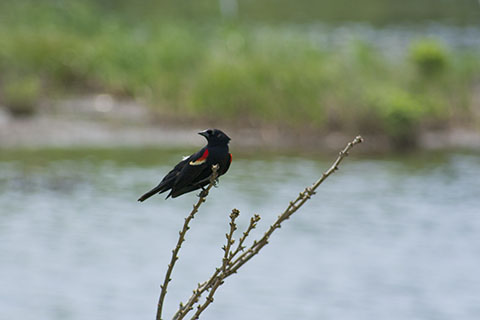
The 949-acre lake with wetlands is a magnate for migrating waterfowl in the spring and fall. The forests on the eastern and western ends of the park are home to deep forest birds like warblers. The fields attract birds that like open areas.
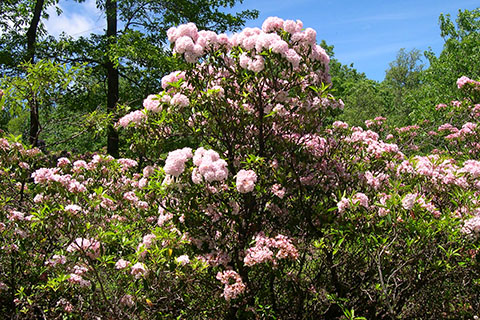
The top of Camelback Mountain is a unique forest called a scrub oak shrub land. Wind-dwarfed gray birch, quaking aspen, red pine, and scrub oak cover the mountaintop, with no tree over 20 feet tall. Lowbush blueberry and sweet fern grow under the short trees. Down slope, the forest offers more shade with mixed hardwoods including oak, maple, hickory trees, and mountain laurel.
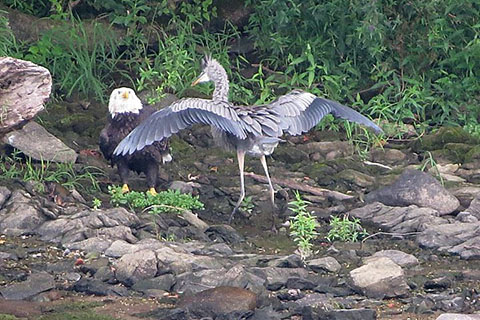
The Delaware is the longest free-flowing river east of the Mississippi River and serves as a major migration corridor for birds and for the American shad. Nockamixon Cliffs Natural Area is habitat for rare plants. Eleven river islands are protected as the Delaware River Islands State Park Natural Area.
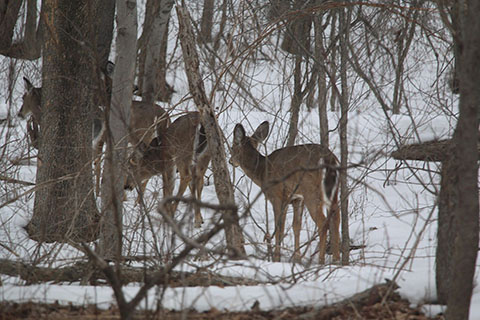
Evansburg State Park is forested by a combination of northern and southern hardwood types in various stages of growth. The blending of these types results in a remarkably wide variety of trees, wildflowers, habitats, and wildlife. Early morning and evening hours are the best time to see deer, rabbits, and other wildlife.
All 16 species of raptors that migrate on the East Coast can be seen from the Fort Washington State Park Observation Deck. The “watch” begins on September 1 and lasts through October 31. Volunteer compilers are on duty every day, 9:00 A.M. to 5:00 P.M., counting raptors that migrate past the deck. The deck provides a scenic overlook year-round, and provides great views of the butterfly garden.
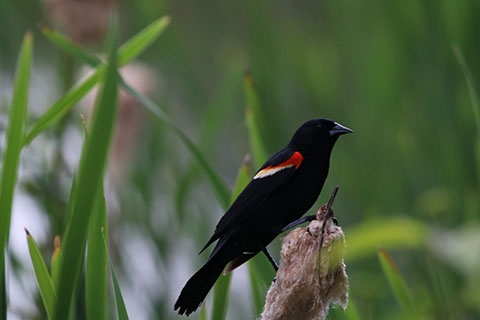
The large lake is a rest stop for migrating waterfowl, especially in the spring and autumn. The forests are home to warblers, thrushes, and forest birds.
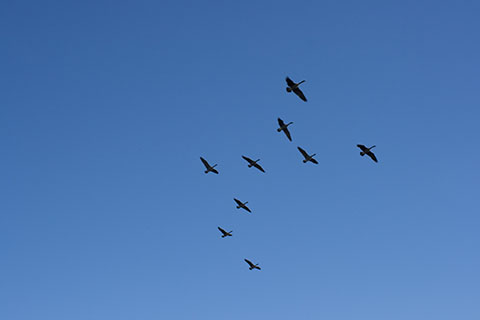
Large oak, poplar, hickory, maple, and beech trees cover much of the park, with a sparse understory of mountain laurel, rhododendron, and other brushy plants. Wetlands and pristine streams flowing through rich, damp creek valleys offer additional habitats for plants and animals. The two lakes are havens for waterfowl.
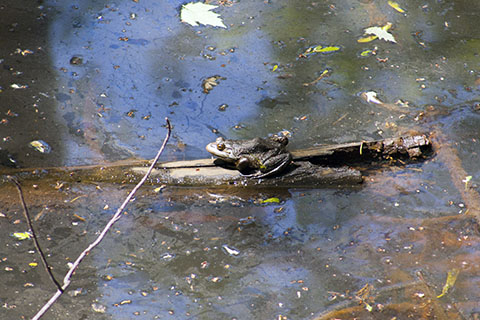
Tobyhanna and Gouldsboro state parks are in the Pocono Plateau, a rugged highland with rocky soil, nutrient-poor bogs, dark evergreen forests, and a diversity of animals and plants.
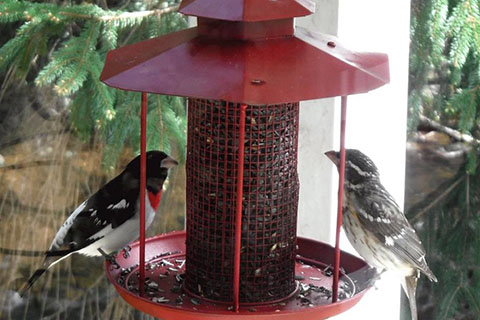
Hickory Run has three state park natural areas, one of which is also a national natural landmark. Half of the park was covered by a glacier and has unique habitats like bogs, and unique plants and animals like Blackburnian warbler and red-berated nuthatch. The other half of the park has different forests and habitats which are home to deep forest birds.
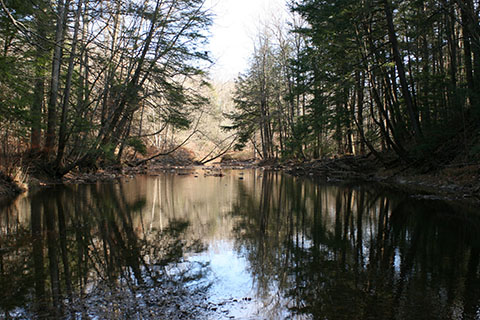
Because of the wide variety of habitat found in and around Henry’s Woods, a rich array of birds and wildflowers may be seen, especially during the spring months. Henry's Woods is an old growth hardwood forest. Bushkill Creek bisects the park and provides riparian habitat.
The lake attracts waterfowl, especially in the spring and autumn. The forests are home to many birds and animals.
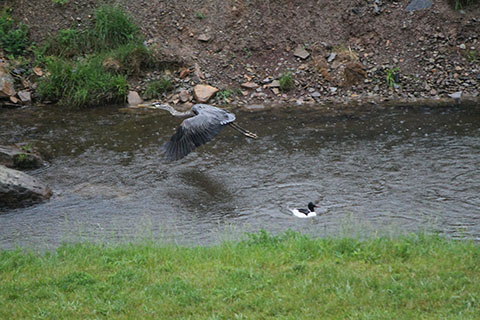
River corridors are natural transportation routes and so Lehigh Gorge has a great diversity of plants and animals. Great blue herons, mergansers, kingfishers, and beavers are common river residents. In summer, the Lehigh Gorge Trail is a great place to see snakes, fence lizards, and warblers, especially black-and-white and magnolia warblers.
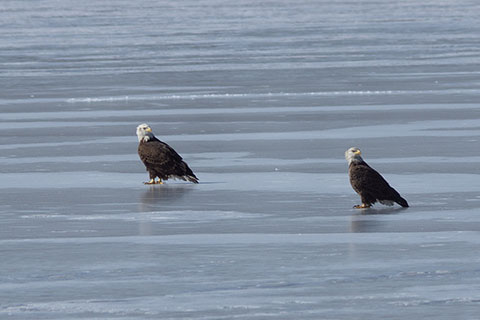
Marsh Creek is a popular place for birding, especially during the spring and fall waterfowl migrations.
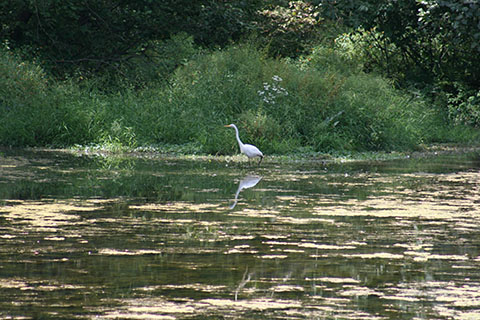
Birders may observe over 100 different land and water species in the park, especially during the migratory seasons. Turtle platforms, bat and duck boxes, and the butterfly field also offer opportunities to view wildlife.
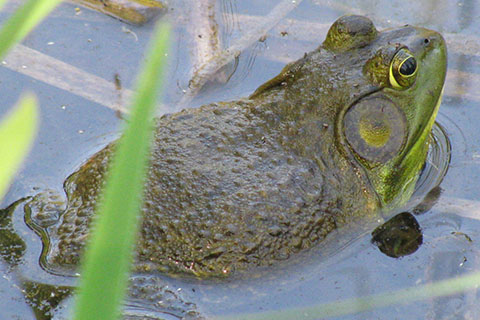
Habitats like the 200 acres of high quality wetlands, rich forests, and six miles of the pristine Nescopeck Creek are home to more than 160 species of birds, 30 species of amphibians and reptiles, and 600 species of plants.
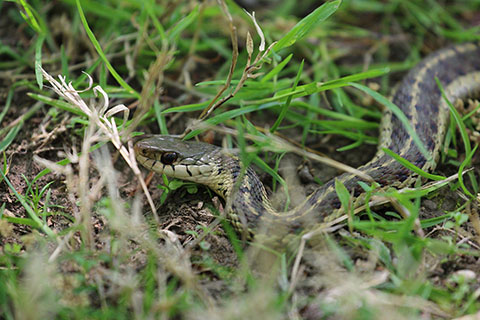
The Neshaminy freshwater estuary is a unique place. Plants and animals from two worlds meet here, some from the ocean and some from upstream headwaters.
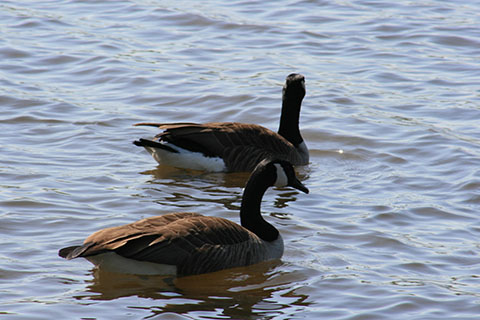
Over 250 species of birds have been recorded at Nockamixon State Park. The numerous habitats of the park are havens for birds and wildlife. The park has grasslands, successional fields, pine plantations, second growth forests, wetlands, and the 1,450-acre Lake Nockamixon.
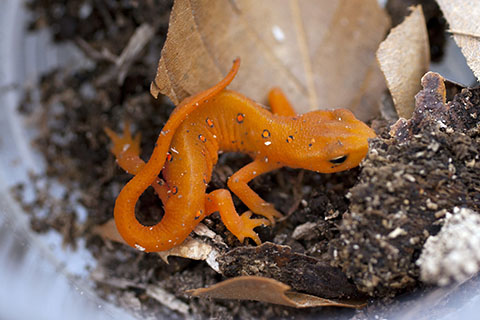
The forests of Nolde Forest are home to many species of birds like deep forest warblers and some birds at the northern end of their range, like the Carolina chickadee. The ponds and streams are habitat for many animals and plants.
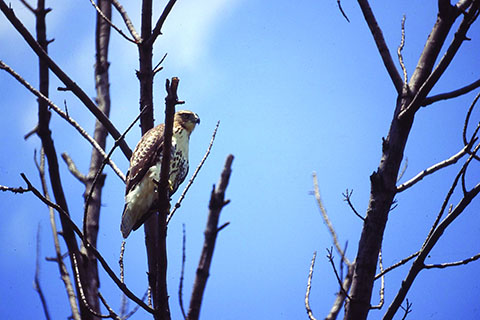
Because of the park’s diverse habitats, more than 170 species of birds have been recorded. Area bird watchers are continually drawn to the park in hopes of catching a glimpse of a new or rare species to add to their own personal list.
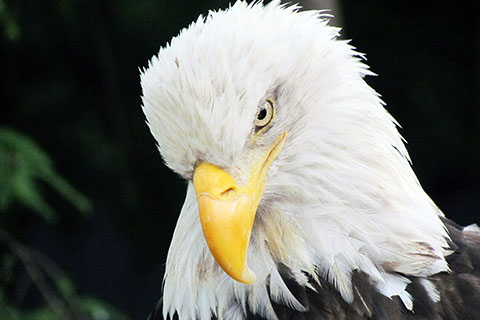
Promised Land State Park is in the Pocono Plateau, a rugged highland with rocky soil, nutrient-poor bogs, dark evergreen forests, and diverse animals and plants. Two lakes and wetlands provide habitat to many animals, including the nesting bald eagles.
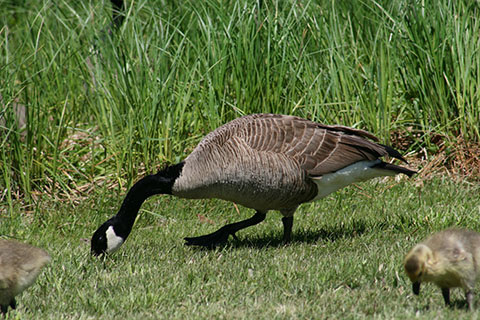
Ricketts Glen is famous for its exceptional diversity of bird life, from 23 varieties of warblers to bald eagles, which is why the park has been included in the official Audubon Susquehanna River Birding and Wildlife Trail.
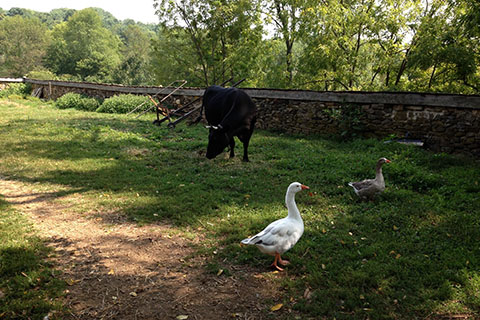
Park habitats include old growth and new growth forests, fields and meadows, wetlands, and the creek corridor. The state mammal, the white-tailed deer, is common, along with fox, raccoon, rabbit, squirrel, and others. Great blue herons frequent Ridley Creek. Many species of songbirds can be seen and heard in the park.
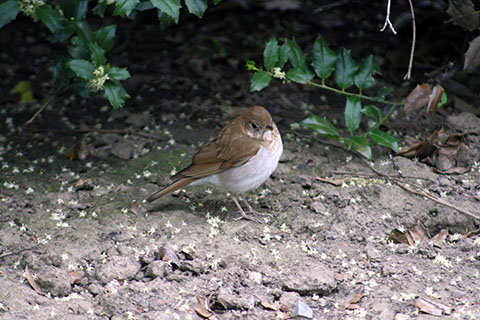
The park lies in a glacially altered, hilly terrain referred to since the 1750s as "the Endless Mountains." The varied habitats of the park, including old growth forest, mixed hardwoods forest, grasslands, and wetlands attract many animals, including more than 150 species of birds, some of which are south of their normal range.
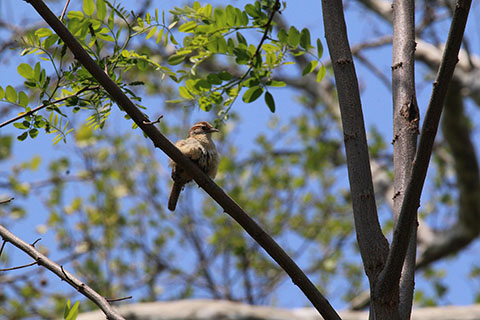
Swatara State Park has a combination of woodland and old fields in various stages of forest succession. The blending of these habitats results in a remarkably wide variety of trees, wildflowers, and wildlife. Nest boxes are maintained for game and non-game species like bluebirds, hawks, wrens, and ducks.
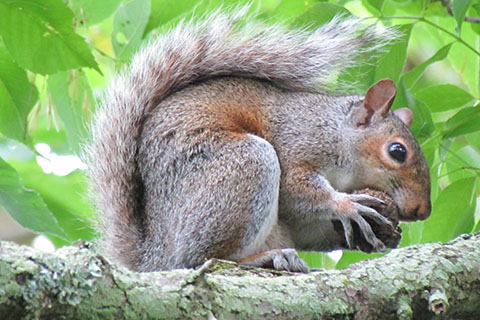
Three main habitats dominate Tyler State Park, forests, fields, and wetlands. The mixed hardwood forests are composed of oaks, maples, and walnuts are great habitat for forest birds like warblers, tanagers, thrushes, and vireos.
Western Pennsylvania Wildlife
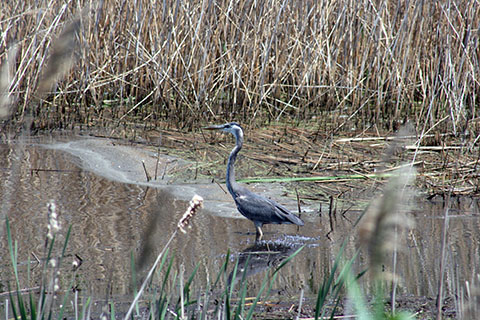
Because river corridors are natural transportation routes, the Clarion River hosts a great diversity of plants and animals. Plant species include cardinal flower, rhododendron, mountain laurel, and many species of forest trees. Common bird species include great blue heron, merganser, kingfisher, and bald eagle. Animal species include deer, wild turkey, river otter, muskrat, porcupine, and black bear.
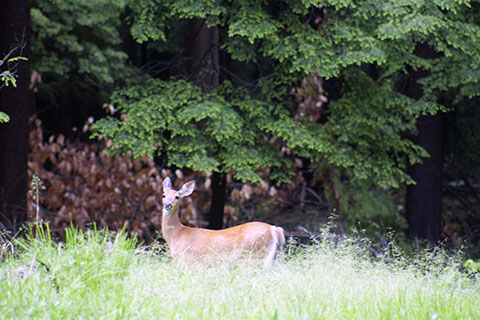
There are 13 miles of the Clarion River flowing through the park that contains plants such as cardinal flower, rhododendron, mountain laurel, and many species of old growth trees. Possible wildlife sightings include deer, wild turkey, ruffed grouse, river otter, muskrat, porcupine, and black bear.
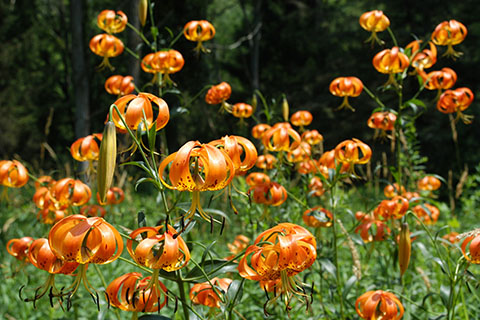
The park has one-mile of shoreline, 90-foot bluffs overlooking Lake Erie, Elk Creek -- a shallow stream steelhead fishery, several plant species of conservation concern, uncommon oak savannah sand barren ecosystem, and forested wetlands.
Keystone State Park hosts a wide range of plant and animal life. These natural attractions offer an exciting adventure for visitors willing to sit, watch and listen for these hidden wonders. Stop at the visitor center for a bird checklist or to learn about the natural sites and wildlife of the area.
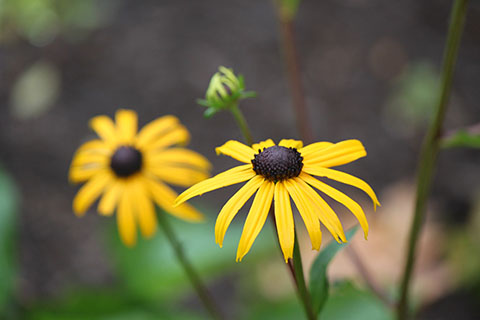
Spring wildflowers dot the forest floor in early April followed by a vibrant green forest, as leaf out begins in late April. Mountain laurel blooms in June and rhododendron blooms in late June and early July. In mid-October the fall color is in all its glory. Winter is spectacular when the park is covered in a deep blanket of snow and great horned owls call through the forest.
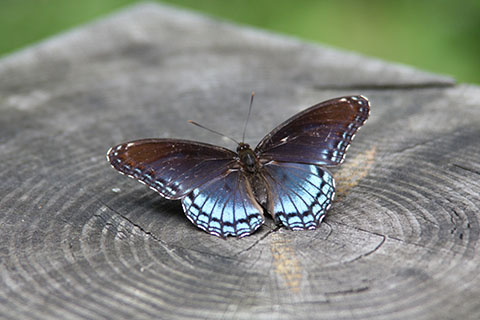
The rich flora and fauna make Laurel Hill a great place to watch wildlife year-round. The forest is dominated by oak, maple, cherry, and poplar trees with an understory of witch hazel, serviceberry, rhododendron, and mountain laurel. The massive eastern hemlocks of a six-acre, old growth stand is now approaching the climax stage of succession.
The large lake, abundant wetlands, old fields, and mature forests provide a diversity of habitats that attracts wildlife in all seasons.
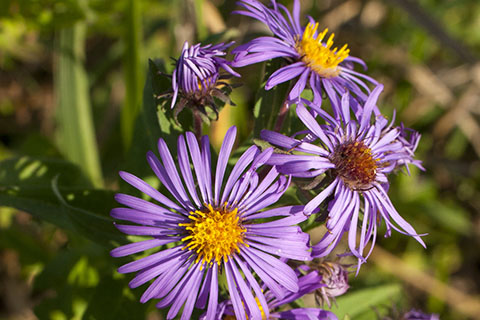
The 930-acre Slippery Rock Gorge was designated a National Natural Landmark and a State Park Natural Area. The steep-sided gorge contains numerous rocky outcrops, boulders, old growth forest, waterfalls, and rare plants. Cleland Rock Vista is a great place to view the gorge.
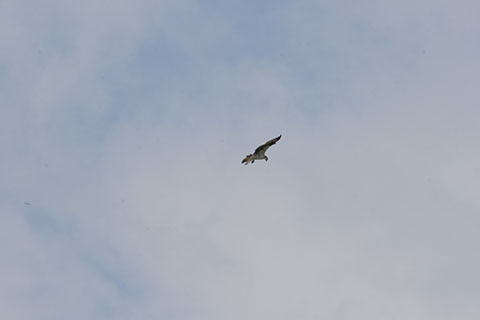
Lake Arthur provides over forty miles of scenic shoreline. Its tributaries include Muddy Run, Big Run, Swamp Run, Bear Run, and more than 75 intermittent streams. Frogs, newts, turtles, and water snakes prowl the edges of the lake. Avian anglers like the tall great blue heron and the small belted kingfisher prey on minnows and fish fry, too small to be caught by human anglers. Osprey a common in the summer.
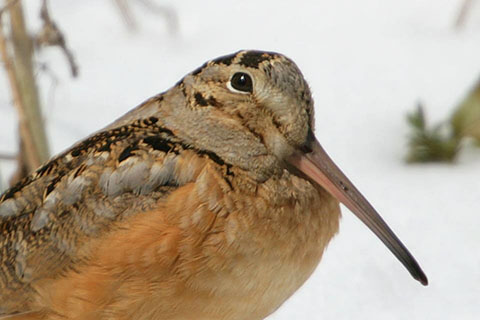
River valleys are natural corridors for wildlife. Ohiopyle has the National Natural Landmark Ferncliff Peninsula which is habitat to rare plants. The extensive forests of the park are habitat to deep woods animals and birds.
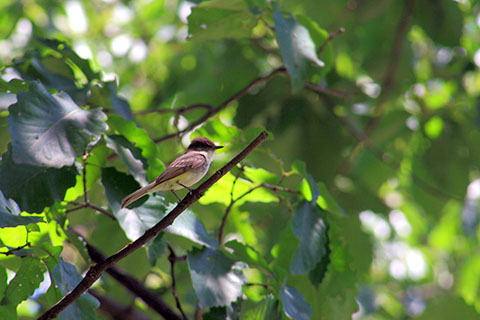
Oil Creek bisects the park and is a fertile, riparian habitat with wetlands. The forests of the park are home to many species of birds.
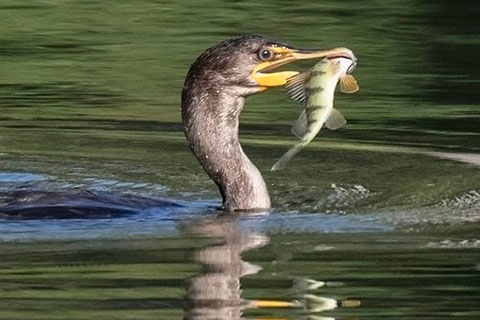
There are six distinct ecological zones on Presque Isle, each with a different plant and animal community. The record of geological succession can be traced through each of these zones. The zones include: Lake Erie, the bay and shoreline; sand plain and new ponds; dunes and ridges; old ponds and marshes; thicket and sub-climax forest; and climax forest.
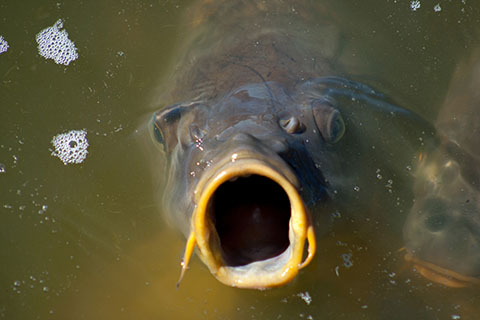
Pymatuning has two natural areas. Blackjack Swamp consists of 725 acres and provides habitat for unique natural communities. In the northern part of the lake is Clark Island which has 161 acres of mature hardwood and white pine forest. Visitors are welcome to explore these undeveloped natural areas.
The 314-acre Wildflower Reserve contains one of the most diverse stands of wildflowers in western Pennsylvania. More than 500 species of plants have been identified in the reserve. The forests of the park are home to deep woods animals and plants.
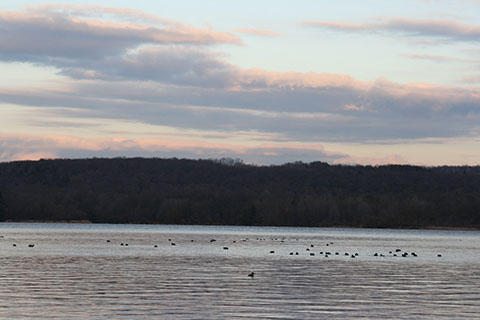
Birds abound at Yellow Creek State Park. The lake is a magnet for migrating waterfowl. The forests are rest and refueling areas for songbirds in the spring and fall. A local birding group meets frequently to bird the park.